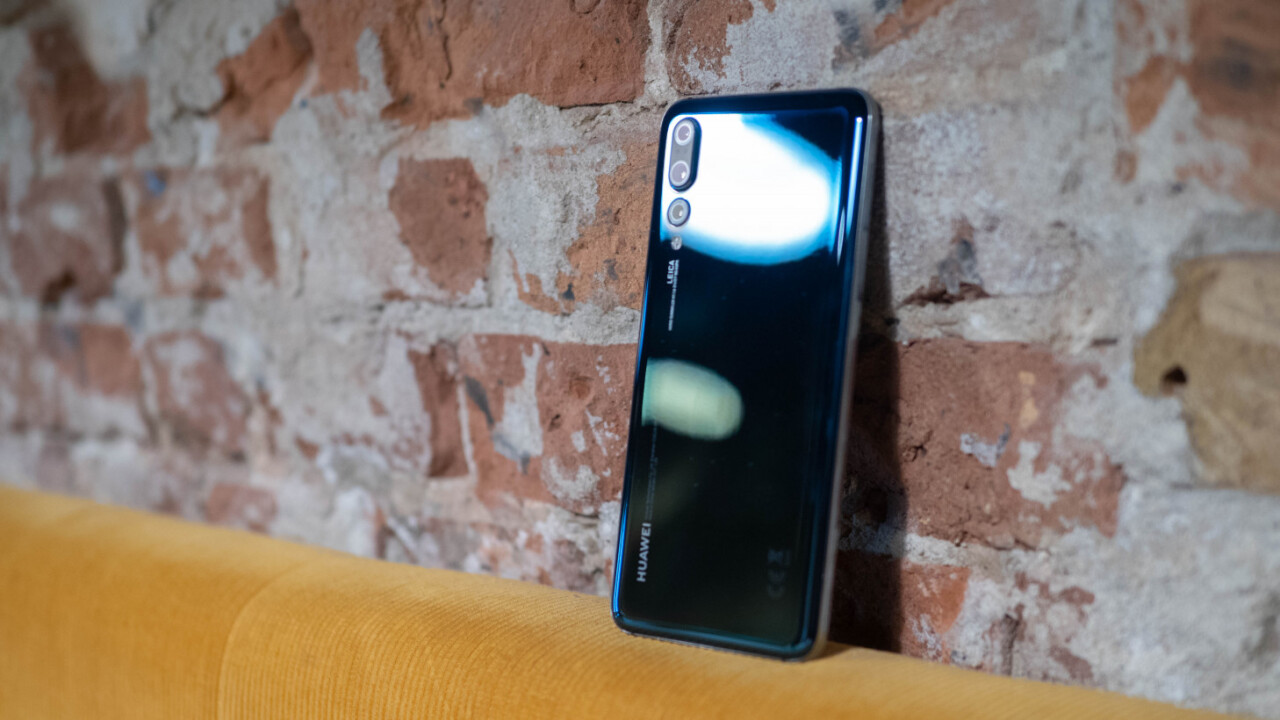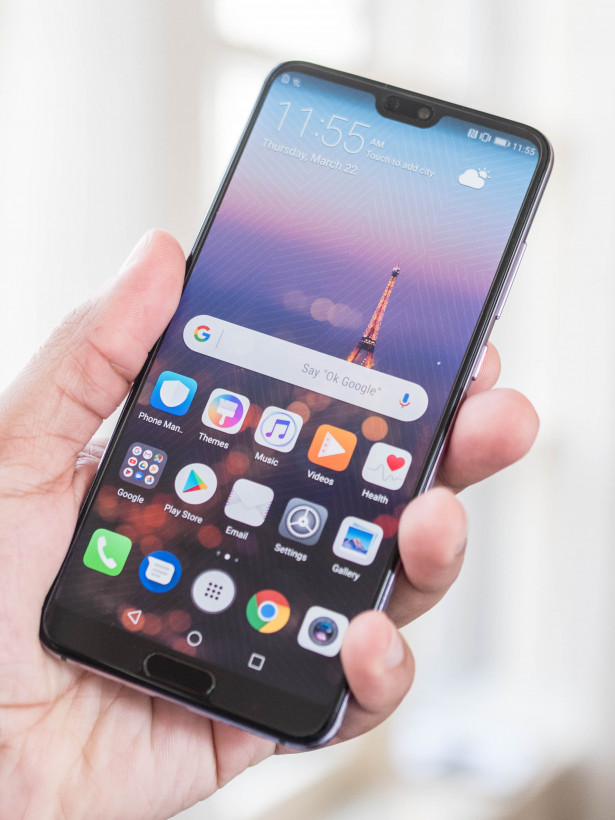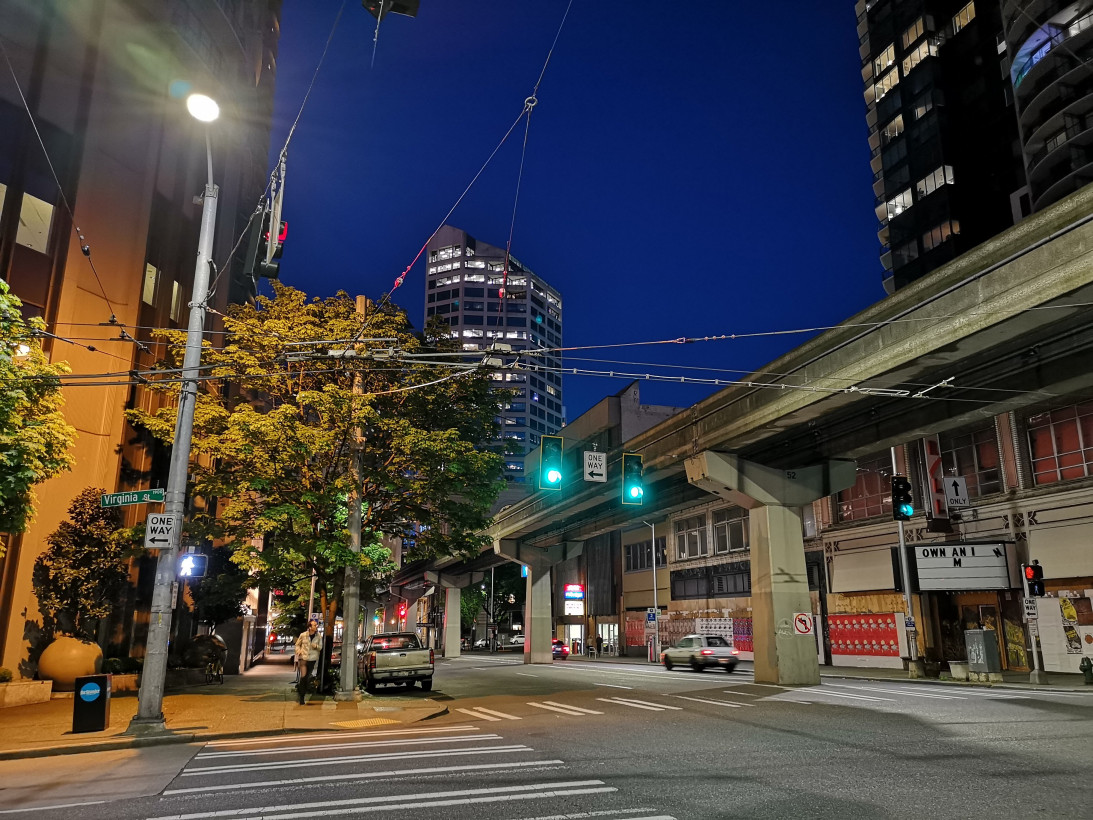
I’ve been using the Huawei P20 Pro for about two months now. By now it’s become clear it’s not my favorite Android phone, but it may very still be the best. It’s a shame most other Americans will never even have the chance to buy one.
Yes, I know “best” is a loaded term. The best anything depends on your own preferences and needs. My best phone has been and still is the Pixel 2 XL, though it’s recently met some very stiff competition from the OnePlus 6. I value a clean software experience and fast updates too much.
But when I think of which phone I’d recommend to most people if the €899 price and availability isn’t an obstacle, it would be the P20 Pro. It looks great, is packed with useful features, and has, objectively, the best camera hardware on a smartphone right now (spoiler: we’re going to talk about the camera a lot). So long as you can more about functionality over raw power and a clean Android experience, the P20 Pro should be near the top of your list.

Huawei checks all the obvious bullet points in a 2018 phone. It shrunk the bezels. It cut out a notch. It has a glass back. It has multiple cameras (which it helped pioneer). It has top-notch specs. This is pretty much standard for a flagship, but it’s what Huawei did beyond he usual suspects that make it so appealing.
Let’s start with the design. Yeah, it has a glass back with no wireless charging. That’s dumb. Nonetheless, the two tone color options are stunning. I thought it’d look gaudy, but in person I couldn’t stop staring at it – until I had to return my purple and blue unit for a more tame ‘just blue’ color.
The P20 Pro is, I think, the prettiest phone on the market right now. If you’re going to do a glass back for no practical reason, this is the way to do it. If only Huawei had found a way to create this finish in metal.
On the front, Huawei has shrunk the bezels, though it’s taken the unusual approach of including a thin fingerprint sensor on the front as well. It looks a little weird, but many people prefer this fingerprint arrangement.

You still get plenty of screen real estate thanks to the notch at the top of the screen. Huawei’s notch is the least obtrusive I’ve seen yet, both narrow and short. You can also hide it in system settings by making the area around it black, and you’re still left with a minimal top bezel. And despite the small notch, Huawei manages to keep a strong stereo speakers setup, even if the the right speaker is bottom-firing.
But the camera setup is the star of the show here, where Huawei brought in some much needed innovation. There are three big features Huawei is touting.
First, Huawei is using three cameras. There’s the standard camera and a monochrome sensor, as in past Huawei phones, but this time around there’s a telephoto lens on board as well. The combined three sensors aid in portrait mode and allow for surprisingly sharp zooming up to 5x, and even 10x works in a pinch. That’s impressive for a DSLR, let alone a smartphone.
Then there’s Huawei’s AI tools, which intelligently detect scenes and adjusts settings and provides suggested features depending on what you’re shooting. It also means impressive digital image stabilization that allows four second exposures.

But the most important change is the simplest. The primary sensor is huge by smartphone standards. It captures nearly twice the amount of light as the sensors on the Galaxy S9 and Pixel 2 do.
This is apparent in its images. The Huawei P20 Pro delivers the best low light images I’ve seen from a smartphone by a wide margin, as well as some of the best dynamic range.
There were times I was shooting images in low light and actually laughed when I saw how clean the images were – to the point I thinkmy mirrorless camera was starting to sweat.

Granted Huawei is still using aggressive noise reduction, something I’m not fond of. But it’s also clear there’s just not as much noise to cancel as on other smartphones.

Similarly impressive is the telephoto zoom.
The normal shot:

And then 5x zoom:

This flexibility in focal length meant I looked at scenes in totally different ways – a lot like walking around with my trio of lenses with my mirrorless camera, but with the speed and flexibility of a smartphone.
There are other clever touches. You can adjust portrait lighting, like on the iPhone X. The fantastic AI-powered image stabilization is so good you can take four-second exposures handheld (more than a second is usually a blurry mess). You can shoot up to 960fps slow motion, although it’s annoying you can only capture a few seconds worth of content in slow-mo.
Portrait mode, by the way, is quite good, though still behind Google and Apple’s realism and edge detection to my eye. For some reason Huawei has both a portrait mode and the ‘Aperture’ mode it introduced with the P9. Annoyingly while you can adjust the amount of background blur in the latter – even after it has been taken – you can’t in the former. As far as I can tell, the results from both modes are identical.

You might consider not using it at all, as the sensor is large enough that you can get decent bokeh using the default camera mode.
Here’s the rub: I don’t much like Huawei’s processing in good light, where its impressive hardware is less of factor. Images are oversharpened and noise reduction is much too aggressive. Faces seemed to be smoothed out even when the beauty feature is turned off. Dynamic range is fantastic and colors are good, but it’s clear Huawei is processing images to be viewed on a mobile screen, not a desktop – and let alone prints.
This lack of refinement is why the P20 Pro doesn’t replace my Pixel 2 overall. For everyday images, I preferred the look of my photos from the Pixel more. Even if the Pixel isn’t as technically capable as the Huawei, Google’s nailed images for what it has.
But then, maybe I’d feel different if I didn’t carry around a mirrorless camera with me most places for my “real” photography. The P20 Pro has a photographic flexibility that’s unmatched in a smartphone and I think the average person would care less about processing than I do. Considering how many features Huawei stuffs into it’s camera software, I just hope the company gives you the option to adjust noise reduction and sharpening in the future.
Huawei’s camera echoes the rest of the phone’s software. On one hand it’s bloated with features, and I grow tired of its vaguely Apple-esque UI. On the other hand, it is full of useful features like a one-handed mode, the ability to run two instances of an app, a screen recorder, navigation gestures and more.
None of this seems to affect performance though. The Kirin 970 is a little old now, having been released late last year, but it still feels surprisingly zippy for a phone with such a heavy Android skin. I’ve been using it for two months and it’s shown no signs of slowing down. As with previous Huawei phones, its AI-powered optimization actually seems to work.

The phone also has marathon longevity. the 4,000 mAh battery helps give the Mate 10 Pro the best battery life I’ve seen on an Android flagship, consistently netting me over 8 hours of screen on time. I never finished a a day with less than 30 percent battery, even with my typical heavy usage. All this without using the various power-saving modes either.

I like this phone. It’s a breath of fresh air in an industry that has felt increasingly by-the numbers in the past few years. It still suffers from Huawei’s usual quirks – a somewhat gaudy UI and bloated features – but these are not enough to quell the sense that this is the most satisfied I’ve been after reviewing a phone in some time. It’s a shame Americans are missing out.
Get the TNW newsletter
Get the most important tech news in your inbox each week.



































